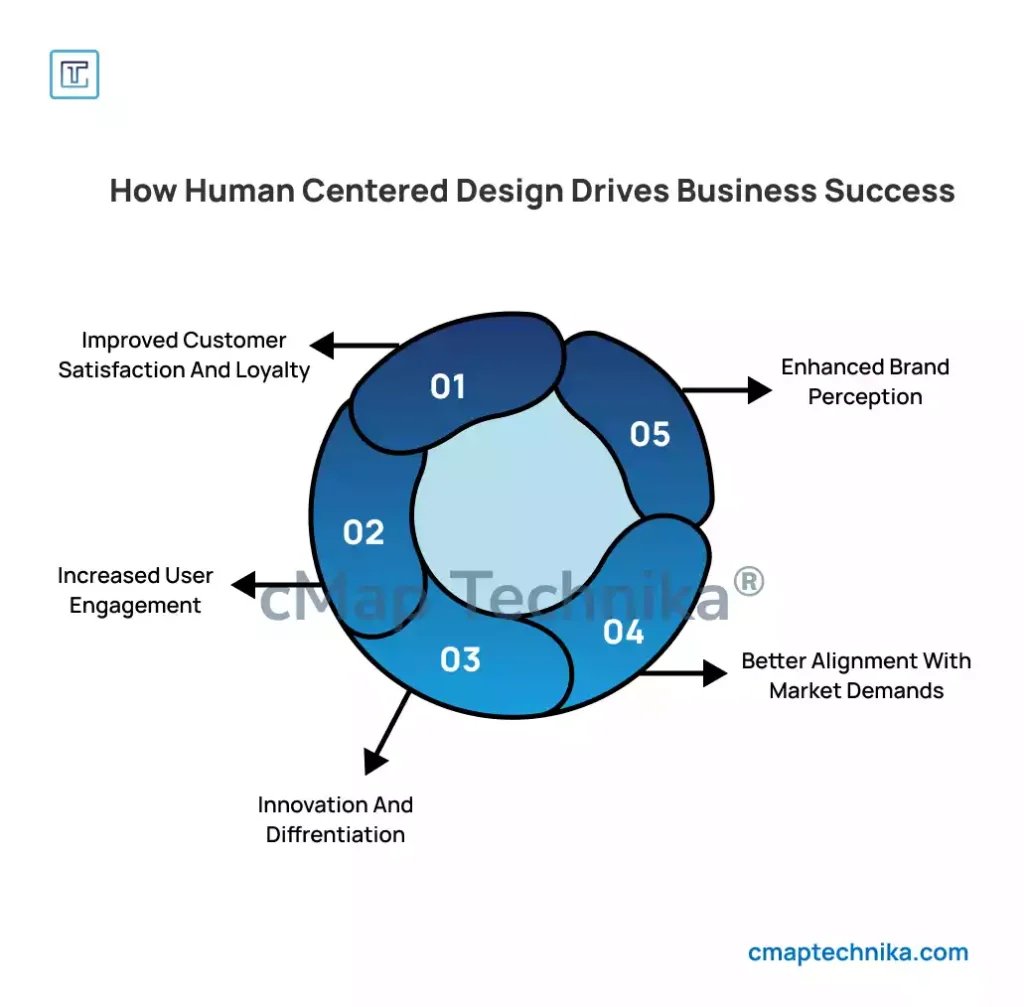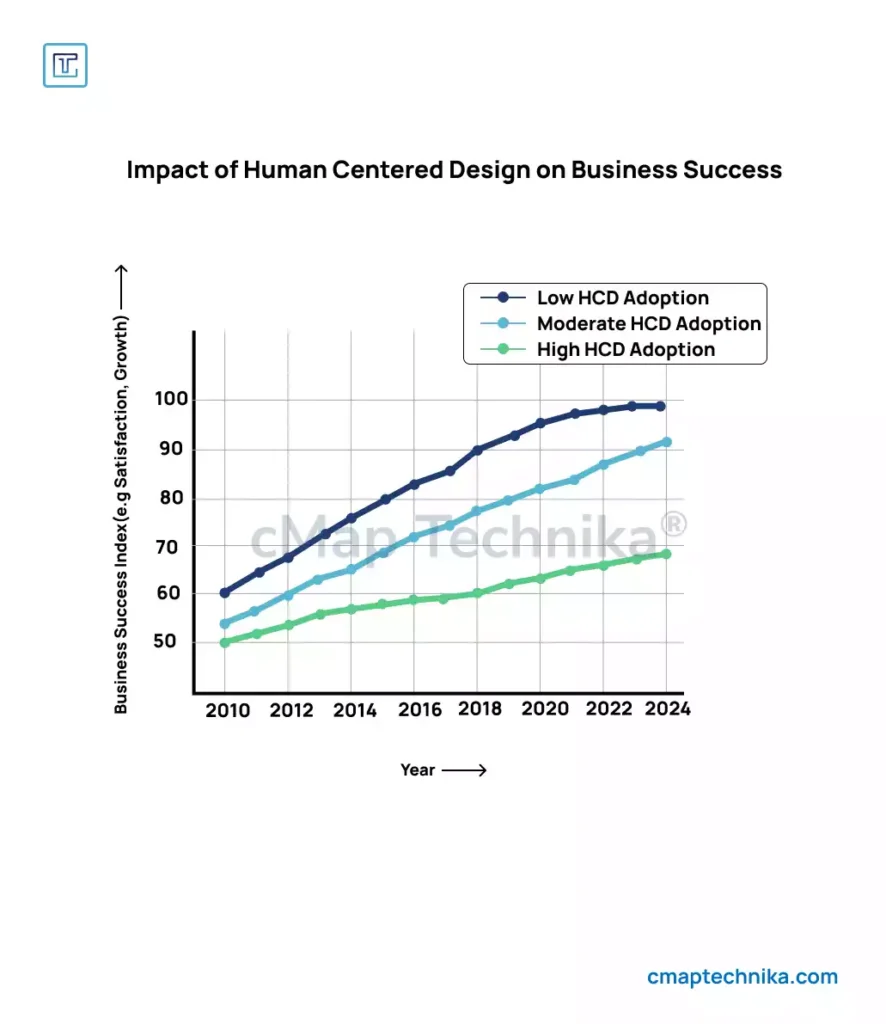In today’s fast-paced and ever-changing business environment, success is no longer solely about offering the best products or services—it’s about creating meaningful connections with users. As organizations strive to stand out in crowded markets, one essential factor has proven to be a game-changer: empathy. When integrated into design processes, empathy allows businesses to understand and address the real needs and desires of their customers, fostering deeper relationships and driving long-term success.
Human-centered design (HCD) is the approach that places empathy at its core, focusing on understanding the experiences, emotions, and pain points of users. By designing solutions that align with the values and needs of the target audience, businesses can create products, services, and experiences that resonate with users on a deeper level, resulting in greater satisfaction, loyalty, and brand advocacy.
At Waltcorp, we believe that human-centered design is more than just a methodology; it’s a mindset that drives innovation, fosters meaningful user engagement, and delivers exceptional business results. In this article, we explore how empathy in design fosters deeper connections with users and drives lasting business impact.
The Importance of Empathy in Design
Empathy is the ability to put yourself in someone else’s shoes, to truly understand their experiences, challenges, and aspirations. In the context of design, empathy goes beyond simply solving a problem—it’s about understanding the emotional and psychological needs of users and designing solutions that align with those needs.
By prioritizing empathy, businesses can develop solutions that are not only functional but also emotionally engaging. When users feel understood, valued, and connected to a product or service, their loyalty to the brand grows, and they are more likely to become repeat customers and brand advocates.
Empathy-driven design also allows businesses to uncover hidden needs or frustrations that users may not explicitly express. By listening to and observing users, designers can anticipate their needs and create innovative solutions that address both obvious and subtle pain points.
How Human-Centered Design Drives Business Success
The integration of empathy into the design process can have a profound impact on business success. Here’s how human-centered design drives tangible results:

1. Improved Customer Satisfaction and Loyalty
Empathy is the foundation of user satisfaction. When businesses understand and address users’ pain points, desires, and motivations, they are better equipped to deliver solutions that meet those needs effectively. This leads to higher satisfaction levels, as users feel that the product or service is designed specifically with their needs in mind.
Furthermore, human-centered design fosters loyalty. When users feel connected to a brand on an emotional level, they are more likely to return and recommend the brand to others. Loyal customers are invaluable assets, as they contribute to a company’s long-term success through repeat business and positive word-of-mouth marketing.
2. Increased User Engagement
Empathy-driven design creates more engaging experiences. By understanding how users interact with a product or service, designers can craft intuitive, seamless, and enjoyable experiences that keep users coming back. Whether it’s through a website, mobile app, or physical product, a user-centric approach ensures that every touchpoint is optimized for ease of use and satisfaction.
Increased engagement leads to better conversion rates, as users are more likely to take desired actions (such as signing up for a service, purchasing a product, or sharing content) when the experience feels personal and relevant to their needs.
3. Innovation and Differentiation
Empathy in design encourages creativity and innovation. When businesses put themselves in their users’ shoes, they gain a deeper understanding of unmet needs, pain points, and desires that may not be immediately obvious. This insight opens the door to new, innovative solutions that set the brand apart from competitors.
Human-centered design fosters an iterative process of prototyping, testing, and refining, ensuring that the final product is both functional and emotionally resonant. By prioritizing empathy and user feedback, businesses can create unique solutions that differentiate them in the market and position them as leaders in innovation.
4. Better Alignment with Market Demands

As markets evolve, so do user expectations. By embracing empathy-driven design, businesses can stay ahead of trends and anticipate changes in consumer preferences. Regular user testing and feedback ensure that products and services remain aligned with the needs of the target audience, even as those needs shift over time.
Empathy helps businesses stay in tune with their customers, enabling them to adjust their offerings in response to market changes and emerging trends. This adaptability is key to sustaining long-term success in a dynamic business environment.
5. Enhanced Brand Perception
A company that demonstrates empathy in its design approach builds a positive reputation among users. When customers feel understood and valued, they are more likely to trust the brand and develop a deeper emotional connection. This leads to enhanced brand perception, as users associate the brand with qualities like care, authenticity, and reliability.
In today’s competitive marketplace, a strong, positive brand perception is a key driver of business success. Companies that prioritize empathy in their design processes are more likely to earn customer loyalty, attract new users, and strengthen their market position.
The Key Principles of Human-Centered Design
To successfully integrate empathy into the design process, businesses must follow the core principles of human-centered design. These principles ensure that design solutions are rooted in a deep understanding of users’ needs and experiences:

1. Research and Observation
The first step in human-centered design is understanding the target audience. This involves conducting thorough research, including user interviews, surveys, and observations. By gathering qualitative and quantitative data, designers can identify key pain points, needs, and desires that guide the design process.
2. Co-Creation and Collaboration
Human-centered design is a collaborative process that involves users at every stage. By co-creating solutions with users, businesses can ensure that the final product or service resonates with the intended audience. This iterative process fosters innovation and ensures that designs remain aligned with user needs.
3. Prototyping and Testing
Prototyping and testing are essential components of human-centered design. Through rapid prototyping, designers can create low-cost, functional models of their ideas and gather user feedback before investing in full-scale production. This approach reduces the risk of failure and allows businesses to refine their designs based on real-world feedback.
4. Empathy-Driven Refinement
The design process is never truly finished. As user needs and market conditions evolve, businesses must continuously refine their products and services to maintain relevance. Regularly soliciting user feedback and iterating on designs ensures that the final solution continues to meet the needs of the target audience.
Conclusion
Empathy is the secret ingredient that fuels business success in today’s user-centric world. By integrating human-centered design into their processes, businesses can foster deeper connections with users, drive greater customer satisfaction, and differentiate themselves in the market.
At Waltcorp, we believe that empathy in design is not just about creating better products—it’s about creating lasting relationships with users. By understanding their needs, desires, and challenges, businesses can build solutions that resonate emotionally, foster loyalty, and drive long-term success.
As the business landscape continues to evolve, the art of empathy will remain a cornerstone of innovation, growth, and user-centered excellence. Embracing human-centered design is not only good for users—it’s good for business.






